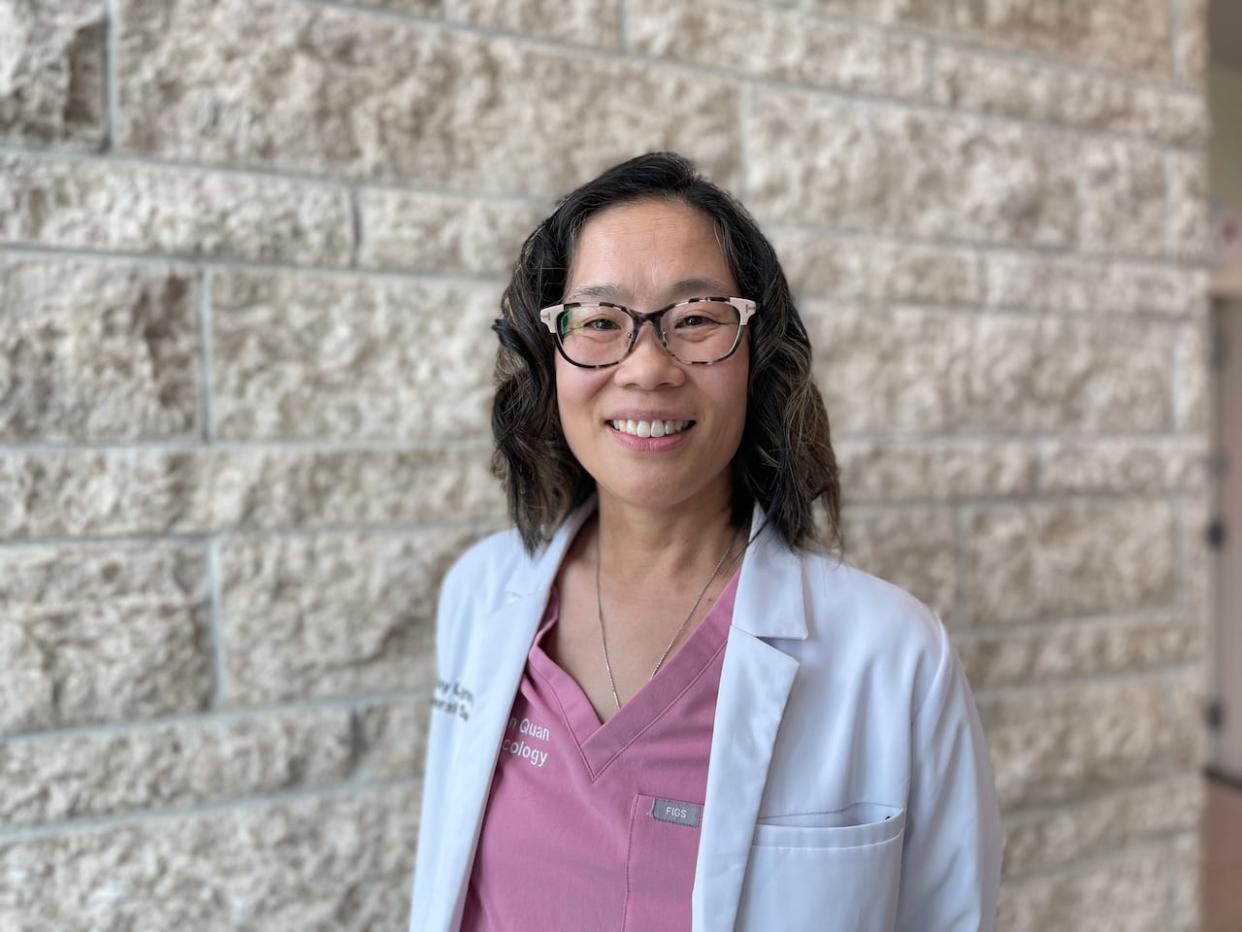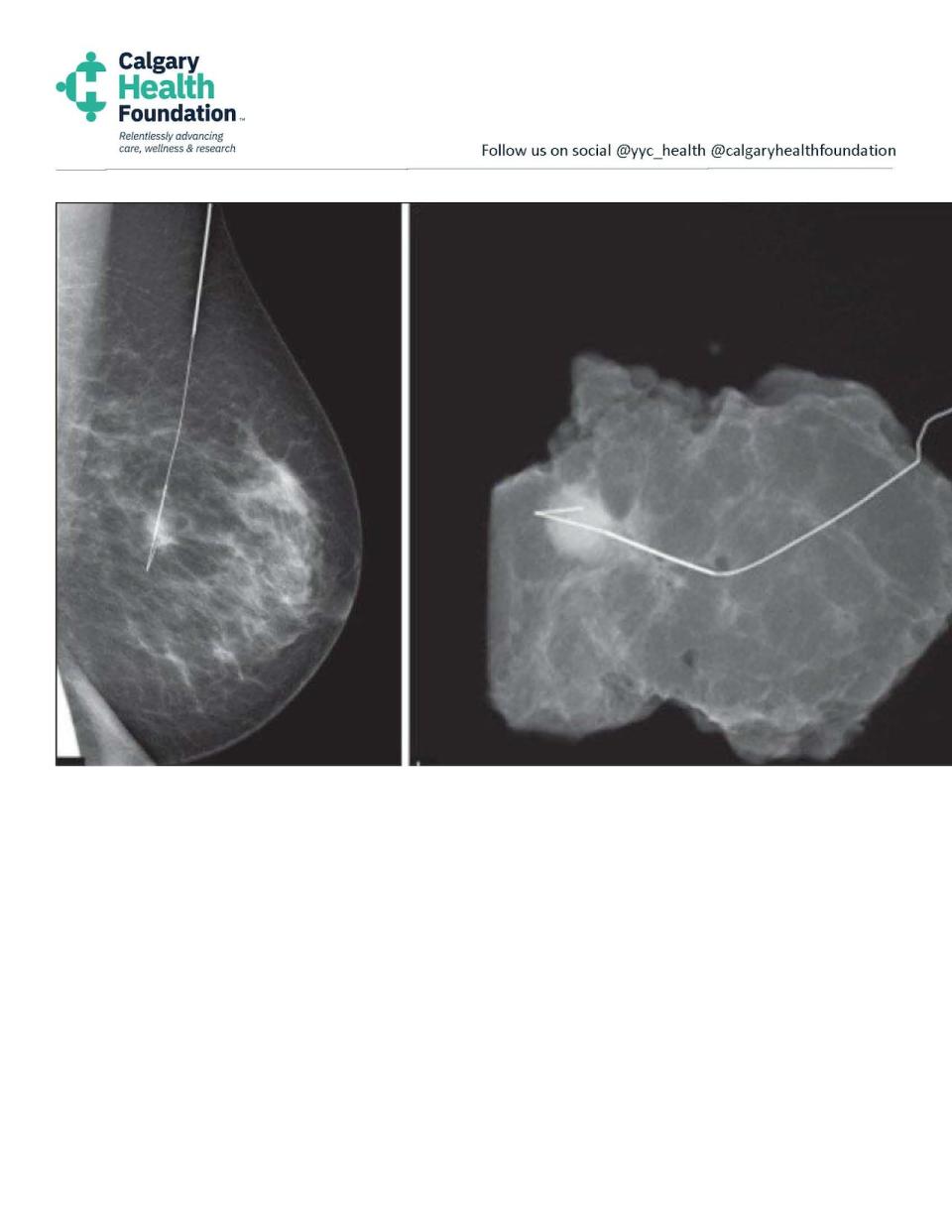Less invasive breast cancer treatment will soon be available to Calgary women

A Calgary pilot project, expected to begin this summer, is promising to make some breast cancer treatment less invasive and less stressful for Alberta women.
When women need small tumours — that can only be detected with a mammogram — removed, most end up having wires inserted into their breasts on the day of surgery to mark the location of the tumour.
The wires protrude from the breast and are taped down while a patient travels to another hospital to have a radioactive liquid injected into her breast before she goes in for surgery.
The wires, which have a hook on the end, can be very uncomfortable and there is a risk they may not stay in place.
The pilot — to be rolled out in three stages in Calgary — will ultimately see women have a tiny magnetic seed, called a Magseed, inserted at the time of the biopsy, eliminating a number of steps in the process.
The seed, the size of a grain of rice, acts as a marker so surgeons can locate the tumour when it comes time to remove it.
"This new technology will make the journey, which is already difficult, smoother and easier for patients," said Dr. May Lynn Quan, surgical oncologist at Foothills Medical Centre and the medical director of the Calgary Breast Health program.
"[It's] less invasive, less painful, less scary, less organizationally a nightmare."
The treatment, developed out of research conducted at the University College London and the University of Houston, is already used in other countries.
Manitoba is the first province in Canada to roll it out provincially, she said.
According to Quan, the treatment eliminates the need for a painful injection of a radioactive liquid through the nipple prior to surgery.
Instead, the surgeon injects a magnetic liquid, allowing for the mapping of lymph nodes, while patients are under a general anesthetic.

The magnetic seed will replace the traditional hook wire, pictured here, through the pilot program. (May Lynn Quan)
"Not only does the patient have way fewer invasive encounters … the seed is in the breast. You cannot feel it," she said.
"The corollary to that is that all those appointments can be given to other women and their wait time can be reduced to be able to access the radiologist to biopsy their tumour."
According to Quan, a radioactive seed technology is used for a small percentage of Alberta patients, treated by some doctors at the Foothills hospital, but it is not ideal because it only works for seven days once inserted in the breast.
And its use in rural Alberta is limited because it has to be implanted in special, nuclear-medicine-approved facility.
She said the magnetic seed treatment is safe and eliminates the need for radioactive exposure because it uses a probe to detect the seed and injected liquid, magnetically.
"No radioactivity is better than radioactivity, in my mind."
It will also eliminate steps for women who need chemotherapy prior surgery, she said.
The three-year pilot project, expected to begin for Calgary patients this summer, will be paid for through $5.7 million from the Calgary Health Foundation and the Alberta Cancer Foundation.
"Women's health is underfunded, under-researched and under-addressed", said Murray Sigler, president and CEO of the Calgary Health Foundation, noting funding women's health is a priority for the organization.
"Projects such as [this], which help to bring women's health to the forefront, are significant. And we know they'll have a far-reaching impact."

The magnetic seed, pictured here, is about the size of a grain of rice. (May Lynn Quan)
According to Quan, the pilot project will allow doctors to gather data on the cost savings and assess factors such as work flow and patient satisfaction.
She ultimately hopes for provincial funding so women across the province can access the treatment and allow women in rural areas to remain closer to home.
"Though this project is focused on Calgary for the time being, we also hope that it proves successful and can be scaled to help more women across Alberta," said Barbara Munroe, vice-chair of the Alberta Cancer Foundation.
In a statement, the health minister's office called the new technology for cancer patients "good news."
"Alberta Health works closely with organizations like the Alberta Cancer Foundation and the Calgary Health Foundation to ensure that the evidence generated by philanthropic endeavors supports timely decisions about expanding access to treatment options," the email said.
"We look forward to the results of the pilot."

 Yahoo News
Yahoo News 
